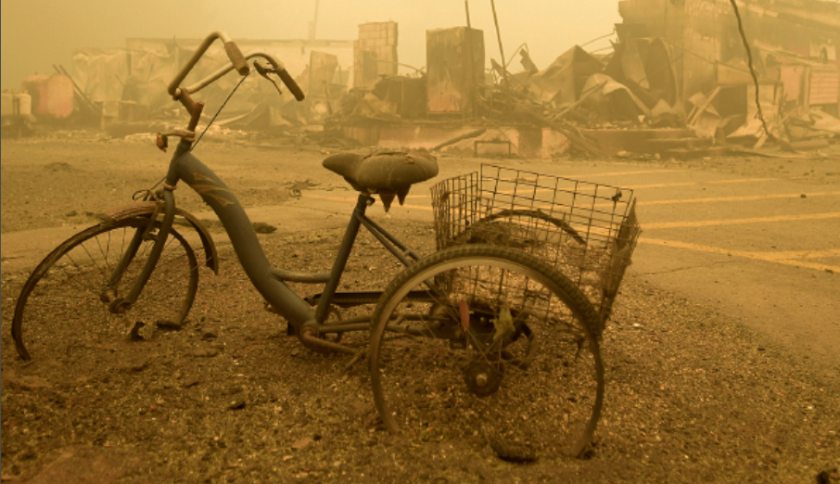
With fires raging on the U.S. West Coast and Hawaii’s recent near-miss with Hurricane Douglas, NASA climate scientists and Hawaii’s local environmental educators and activists said the increase of natural disasters is no coincidence. Rather, they said, if actions are not taken immediately, the ongoing climate crisis is an event that could lead to fatal repercussions for the earth and its inhabitants.
“I wish people understood this is a people problem,” said Spencer Ingley, a biology professor at BYU–Hawaii who emphasized humans are not separate from the environment they inhabit.
“We are all going to be affected by this crisis, and it will take effort from all of us to fix it. This will require some sacrifices, but if we don’t make those sacrifices now, we will be forced to make them in the future when the climate provides us with no alternative.”
The Center for Climate and Energy Solutions website explains what climate change is and the science behind the events, specifically how climate change is caused in large by human activity from greenhouse gases and not by natural variations in climate.
The Center’s website says emissions from cars, power plants, and other human-made innovations that require energy contribute most to greenhouse emissions.
Carbon dioxide is the main greenhouse gas, and the concentration of this gas within the earth’s atmosphere has reached a peak that hasn’t been seen in 800,000 years, says the Center’s website
Greenhouse gases act like a blanket, trapping the sun’s warmth near the Earth’s surface, affecting how the climate system runs, states the Center’s information.
If people continue on their current path and emit more greenhouse gas, the Center’s website says the earth’s temperature could rise by 9 degrees Fahrenheit. A 1-degree global change is significant because it takes a vast amount of heat to warm all the oceans, atmosphere and land by that much. In the past, a 1-to-2-degree drop was all it took to plunge the Earth into the Little Ice Age, it says on earthobservatory.nasa.gov.
Ingley explained what this could mean explicitly for Hawaii. “Here in Hawaii, the major concerns are sea-level rise and the potential for more intense hurricanes. Sea level rise can occur both as the polar ice caps melt and as the ocean heats and expands. These are major concerns in Hawaii and throughout the Pacific because populations are concentrated very close to the shoreline.
“Over time, these shorelines are expected to retreat, and our governments will be required to spend billions to mediate these effects through sea wall construction and other infrastructure changes. The warming seas also increase the potential for stronger hurricanes, which thrive on warmer surface temperatures. We could expect more frequent and intense storms in the coming decades,” Ingley said.
BYUH alumnus Tanner Sanchez-Smith studied biology and is continuing his studies at BYU in Provo. He explained students don’t have to venture to the ice caps to see the effects of climate change.
“More frequent tropical storms that bring about more flooding, erosion and infrastructure damage are associated with climate change. The roads that the North Shore community relies upon (Kamehameha Highway) are constantly crumbling from sea level rise. These things have real social and economic impacts.”
The Center’s website explains if people make efforts to reduce their emissions now, the earth’s temperature will still rise, but humans can limit it to 4.8 degrees Fahrenheit.

Another alumnus, J. Eston Dunn, is taking the knowledge of conservation biology he learned at BYUH to Dutch Harbor, Alaska, as an observer at the National Marine Fisheries Service. Dunn shared how people can make changes in their own lives to help lower emissions.
“Most of my efforts in lowering my emissions are diet-related. I actively eat less meat and processed food, which significantly cut down on my carbon footprint. Right now, in Alaska, I haven’t seen a ton of effort in cutting down on emissions. People are mostly focused on reducing pollution and plastic usage out here,” Dunn said.
Ingley also gave ideas on how to be more environmentally conscious. “In my family, we are very big on energy conservation. We take advantage of natural light to light our home and the trade winds to help keep us cool. We try to grow as much of our own food as possible and share what we can with neighbors.
“I commute to work every day on my bicycle, which gives me a bit of exercise and cuts down on transportation costs. We also try to eat a mostly plant-based diet, getting produce from local sources as much as possible. This helps support the local economy and cuts down the carbon costs associated with importing food.”
Sanchez-Smith explained it is also within the power of the people to limit the emissions from big corporations. “Corporations pollute more than the aggregate of all individuals. So, one important action we can make as consumers is to do research into responsible companies and try to avoid the big polluters. Then we can hopefully drive corporations to be more sustainable.”
Both Dunn and Sanchez-Smith urged Church members to notice how religious principles of empathy should motivate and move people towards action.
“This isn’t right versus left. This is truth versus falsehood, and as members of the Latter-day Saint community, we’re commanded to seek out and stand for truth even when it makes us uncomfortable or challenges beliefs we may have held before,” Dunn said.
Sanchez-Smith added to this principle. “If we are all followers of Christ, we should be concerned about our fellow man. What is more Christlike than altruistically trying to help people who are vulnerable to climate change?
“If people want to get involved, they should do research into what their own actions are doing and how they can improve. Forget any political or social implications and just be willing to learn how you can improve to help out humanity.”
